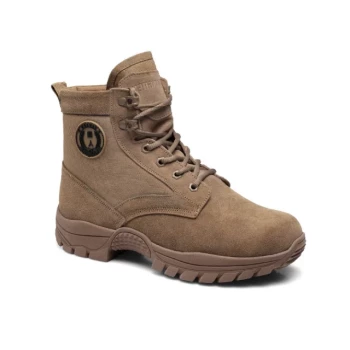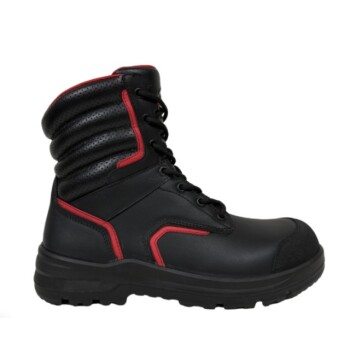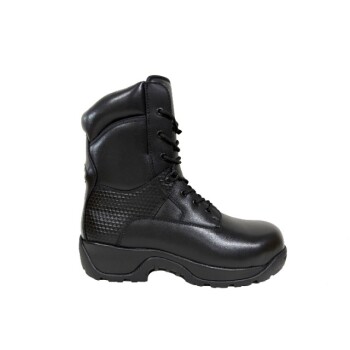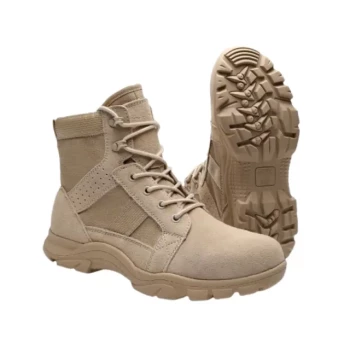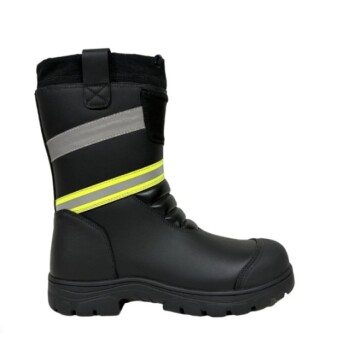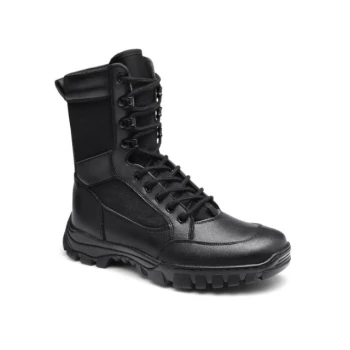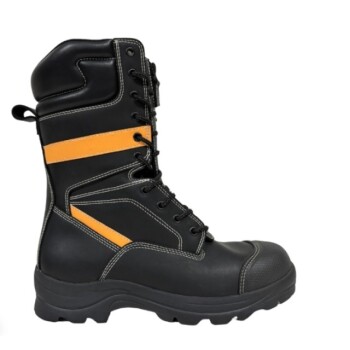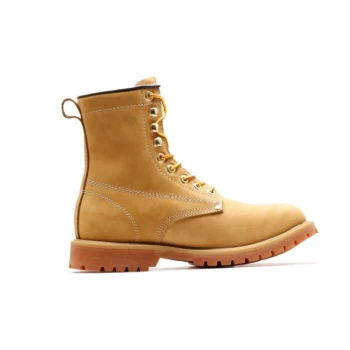At its core, a combat boot is a piece of military-grade equipment designed specifically for the extreme demands of field operations. Unlike other footwear, every feature is engineered to maximize a soldier's survivability, mobility, and effectiveness in unpredictable and hostile environments. Its primary purpose is not comfort or style, but performance under duress.
The defining characteristic of a combat boot is its uncompromising focus on mission-critical performance. It is a tool built for a single purpose: to provide maximum durability, protection, and support during military combat, where equipment failure is not an option.

The Core Philosophy: A Tool for the Field
To understand what makes a boot a combat boot, you must first understand its design philosophy. It is not simply a heavy-duty boot; it is a critical component of a soldier's gear, engineered for a specific and dangerous job.
Designed for Mission Success
A combat boot's design is dictated by the needs of a soldier in the field. This includes long marches over rough terrain, carrying heavy loads, and the need to remain agile and effective during conflict.
The boot must function reliably in diverse conditions, from wet jungles to arid deserts, without failing or hindering the user.
Protection as the First Priority
The primary goal is to protect the foot and ankle from injury. This is why combat boots feature high, sturdy uppers that provide exceptional ankle stability, a critical feature for preventing sprains on uneven ground.
The materials are chosen for their ability to resist cuts, abrasions, and environmental hazards, ensuring the foot is shielded from external threats.
Durability Under Extreme Duress
Combat boots are built to withstand abuse that would destroy conventional footwear. This is achieved through sturdy stitching, tough laces that won't snap, and rugged materials that can endure constant stress.
The expectation is that the boot will perform without compromise throughout a deployment, regardless of the conditions.
Deconstructing Key Features
While specific designs evolve, a set of core features consistently defines a true combat boot. Each feature serves a distinct tactical purpose.
The Sole: A Foundation for Movement
The outsole of a combat boot is engineered for more than just traction. It must provide slip resistance on a wide variety of surfaces, from wet rocks to mud and sand.
Furthermore, many designs incorporate quiet soles to reduce noise, a crucial element for maintaining stealth in tactical situations.
The Upper: Balancing Support and Flexibility
The upper portion of the boot provides the critical ankle support mentioned earlier. It is constructed from durable leather, nylon, or a combination of materials.
Despite its sturdiness, the design must also allow for a necessary degree of flexibility, enabling a soldier to run, crouch, and move athletically without restriction.
The Interior: Managing the Internal Environment
A soldier's feet can be in boots for days at a time. Therefore, breathability is a non-negotiable feature to manage moisture, prevent blisters, and maintain foot health in the field.
Modern combat boots strive to be as lightweight as possible without sacrificing protection, reducing fatigue during long movements.
Understanding the Trade-offs: Combat vs. Work Boots
The purpose-built nature of combat boots becomes clear when comparing them to other types of durable footwear. The design choices reflect different priorities and lead to significant trade-offs.
Where Combat Boots Excel
Combat boots are superior in providing a blend of robust protection, ankle stability for rough terrain, and all-environment durability. They are designed for mobility and performance in unstructured, unpredictable outdoor settings.
Where Work Boots Excel
Work boots are designed for the specific hazards of a job site. They often prioritize features like certified steel toes for impact protection, puncture-resistant soles, and oil resistance—protections that are not the primary focus of a combat boot.
Work boots are also typically optimized for comfort during long periods of standing on hard, flat surfaces, a different requirement than moving over varied terrain.
Making the Right Choice for Your Goal
Selecting the correct boot means matching its design philosophy to your specific needs. A boot built for one purpose will rarely be the best choice for another.
- If your primary focus is maximum protection and support across unpredictable, rugged terrain: A true combat boot is engineered for this exact scenario.
- If your primary focus is on-the-job safety against specific industrial hazards like impact or punctures: A dedicated work boot is the correct and safer choice.
- If your primary focus is speed and agility in a less demanding environment: A lighter-weight tactical boot may be a more suitable option than a traditional combat boot.
Ultimately, choosing the right boot is about understanding that it is a specialized tool designed to solve a specific problem.
Summary Table:
| Feature | Purpose | Benefit |
|---|---|---|
| High, Sturdy Upper | Ankle Stability & Protection | Prevents sprains, shields from cuts and abrasions |
| Rugged Outsole | Slip & Noise Resistance | Provides traction on varied surfaces and maintains stealth |
| Durable Materials & Stitching | Longevity Under Stress | Withstands extreme conditions without failure |
| Breathable, Lightweight Interior | Moisture Management & Reduced Fatigue | Maintains foot health during prolonged use |
Need Combat Boots Built for Extreme Demands?
As a large-scale manufacturer, 3515 produces a comprehensive range of military-grade footwear for distributors, brand owners, and bulk clients. Our production capabilities encompass all types of durable boots engineered for maximum protection, support, and performance in the toughest environments.
We provide:
- Uncompromising Durability: Boots built to withstand extreme duress, just like the combat boots described.
- Bulk Manufacturing Expertise: Reliable, high-volume production to meet your supply chain needs.
- Customization for Distributors & Brands: Tailored solutions to match your specific market requirements.
Let's discuss your footwear needs. Contact 3515 today to learn how our manufacturing expertise can bring superior, mission-ready boots to your customers.
Visual Guide
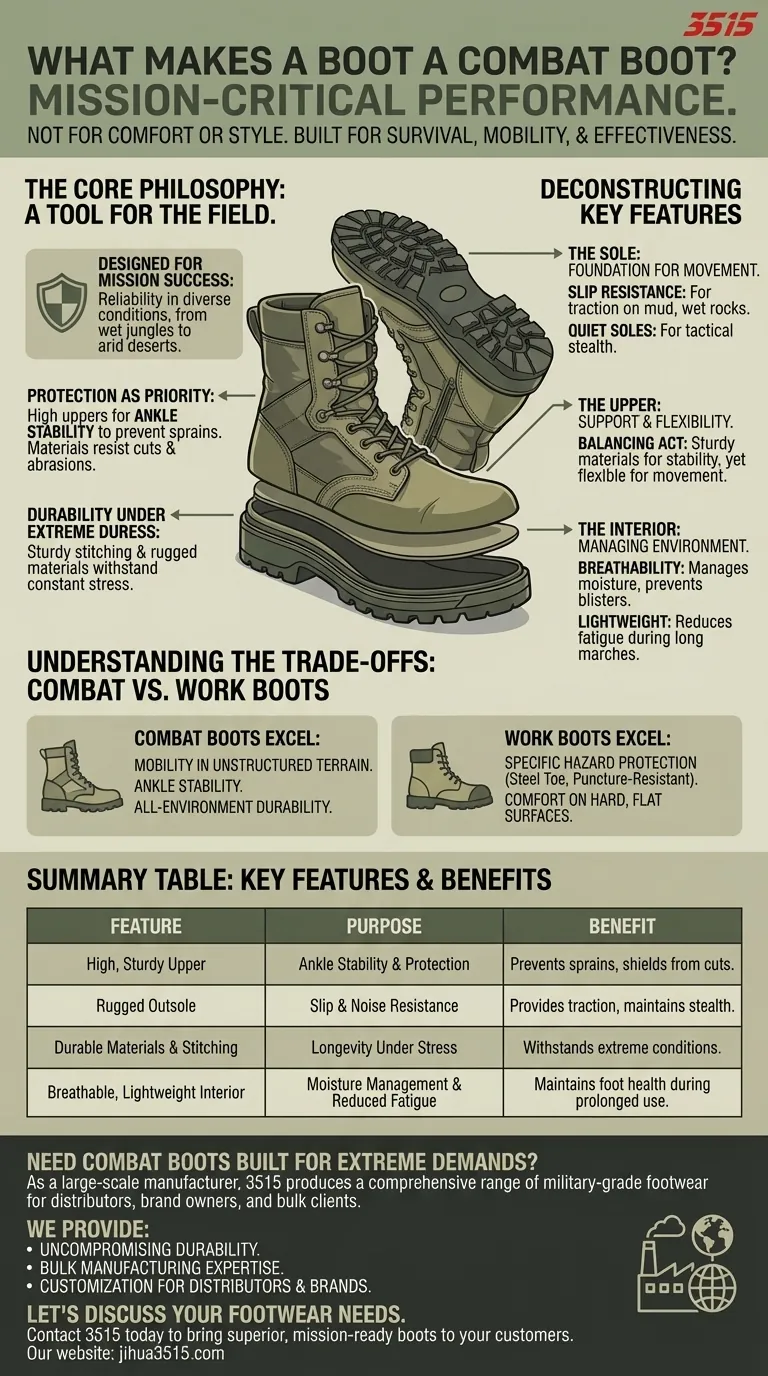
Related Products
- Wholesale Waterproof Tactical Boots Custom Suede & High-Traction Soles
- High-Traction Suede Tactical Boots Wholesale & Custom Manufacturing
- Durable Leather Tactical Boots Wholesale & Custom Manufacturing for Brands
- Premium Wholesale Waterproof Safety Boots High Performance Protection for Industrial Markets
- Durable Mid-Cut Tactical Boots for Wholesale & Private Label
People Also Ask
- What are some real-world applications of military camouflage boots? From Tactical to Trendsetting
- How do uniform requirements influence the choice between tactical boots and sneakers? Select Compliant Footwear for Your Role
- Why is waterproofing important in tactical boots? Essential for Foot Health & Mission Success
- How does breathability contribute to the comfort of tactical boots? Prevent Blisters and Boost Performance
- What waterproof technology is used in tactical boots? Unlock All-Weather Performance & Protection

